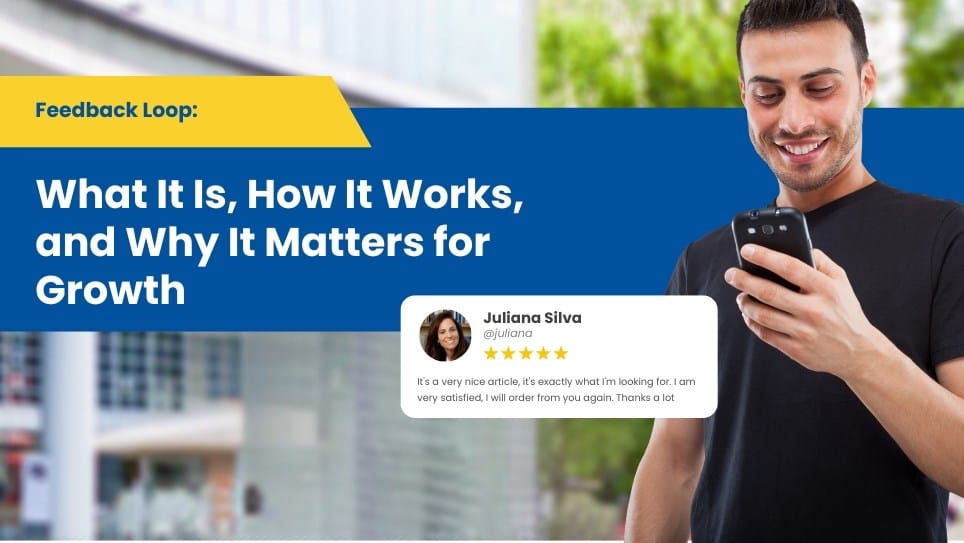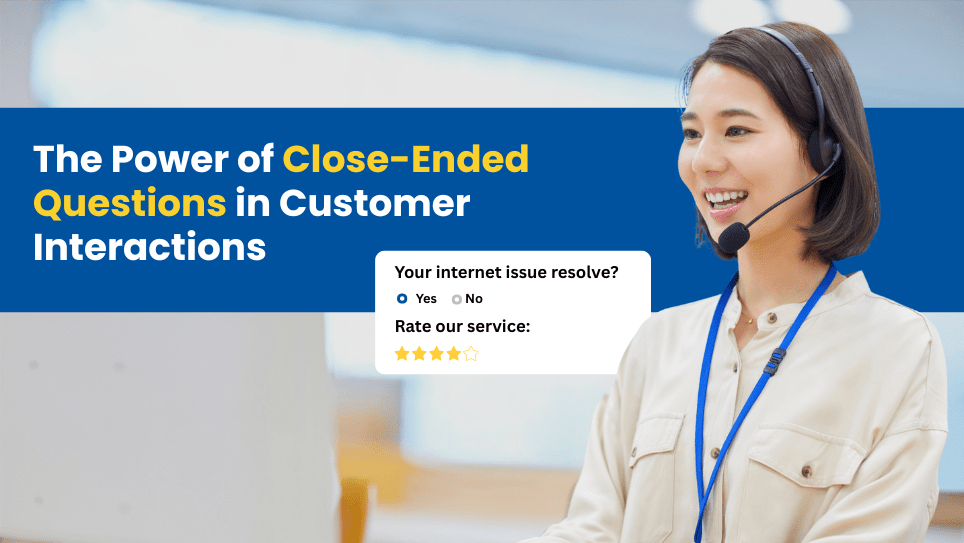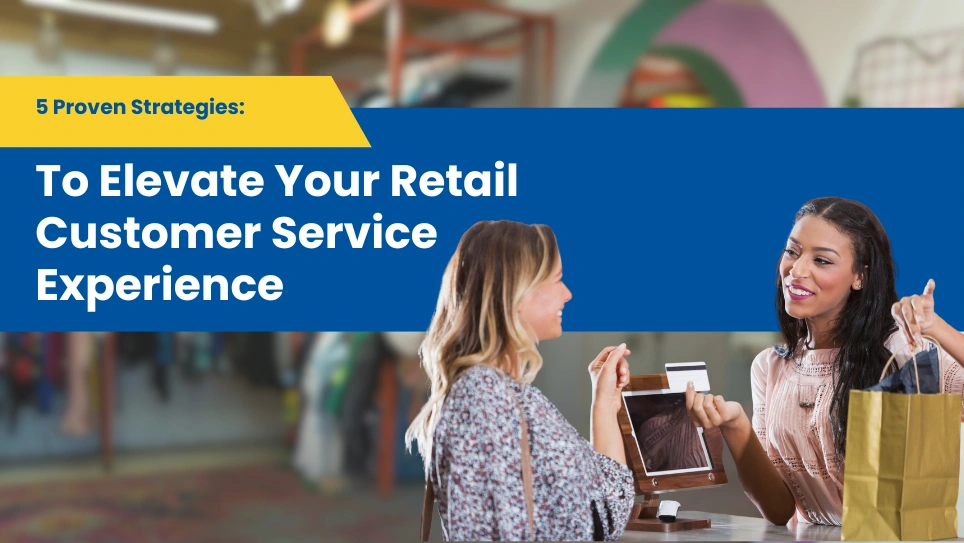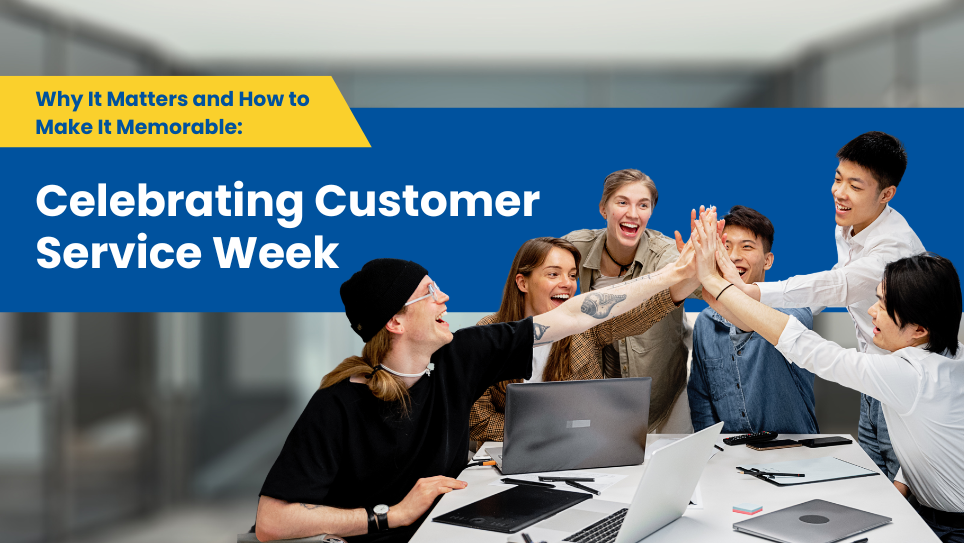Feedback Loop: What It Is, How It Works, and Why It Matters for Growth

Feedback Loop: What It Is, How It Works, and Why It Matters for Growth In today’s fast-moving world, the ability to learn and adapt quickly separates successful businesses from those that fall behind. At the heart of this adaptability is the feedback loop a process where results are measured, analyzed, and then fed back into the system to improve future outcomes. From biological systems that regulate our bodies, to business strategies that keep customers loyal, feedback loops are everywhere. But what exactly are they, and how can you use them to build stronger systems? What is the meaning of the feedback loop? The true meaning of a feedback loop lies in its ability to create continuous learning. It’s not about reacting once and moving on; it’s about establishing a system that automatically learns from past experiences. There are two main types of loops that explain how systems behave: the positive feedback loop and the negative feedback loop. A positive feedback loop amplifies what’s working. In business, it may take the form of a referral program: a satisfied customer is referred by a friend, a friend by another, etc. Conversely, negative feedback loop is concerned with stability. As an illustration, a call center experiencing a lengthy waiting time will automatically divert the customers to chat bots or reserve employees to maintain service levels at normal. Both of them are important: positive loops make you develop, and negative loops make you remain stable. How does a feedback loop work in practice? In its simplest form, a feedback loop consists of four steps, including the gathering of input, the analysis of insights, action on findings, and the loop closure, which involves communication of the changes. In the case of a customer feedback loop, this could be in the form of sending post purchase surveys, revealing that shipping delays are annoying buyers, fixing the logistics and then notifying customers that their feedback directly contributed to faster deliveries. Repetition is the power of a feedback loop. One round improves the one before it is resulting in improved products, improved processes and relationships. Without the final phase of the process involving communicating what changed the loop is not complete and the stakeholders will cease to give feedback in future. What best describes a feedback loop? The feedback loop can be defined as the recurring cycle in which the outputs are the subsequent input. Example: a business that gathers customer survey data: whatever the customer is saying is the input, analyzing the patterns in the responses is the analysis, fixing the pain points or adding features is the action, and the cycle repeats where the business explains the changes to the customers. This does not end it repeating and perfecting itself. The same can be stated in non-business as well. In technology algorithms optimize themselves based on their feedback. At its simplest, a feedback loop is about listening, learning, and adjusting over and over again. What is a feedback looper? The person or tool responsible for keeping the cycle alive is often called a feedback looper. This could be a product manager that will make sure that feedback by the users is translated into features, a customer success manager that keeps track of satisfaction, or even automated software that will route and analyze feedback to scale. Unless someone, or something, is actively working to feed some insights into the system, feedback runs the risk of being gathered and never acted upon. Great loopers do not simply collect information. They give more importance to high impact insights, have defined owners to be followed up, and report the results to the stakeholders. That is, they make sure that the loop does not exist but flourishes. What is a positive feedback loop? Positive feedback loops and negative feedback loops can manifest themselves in various ways in business. Take an example of a loyalty program in the retail industry. Each purchase gets points, and this motivates more purchases, thus, resulting in more points, and this cycle of repeat purchases. It is a typical positive loop because it increases an action that is good for both the customer and the company. What is a negative feedback loop? Conversely, a negative feedback loop is enacted when something requires fixing. Indicatively, when the customer service wait time begins to increase, the system automatically increases the number of agents or provides self service. After normalization of the wait times, the system goes back to normal staffing. This balancing effect averts the crisis and makes sure that customers still get a steady service. What is important to know is that both a positive loop (continuous growth due to success) and a negative loop (risk management) are essential to businesses. How can you create a customer feedback loop that actually works? A customer feedback loop is one of the most powerful tools any business can use. It starts by actively gathering input through surveys, interviews, or monitoring online reviews. But collection is just the beginning. The feedback has to be analyzed carefully so recurring pain points and opportunities stand out. The second is action either by correcting an imperfection in a product or polishing policies or launching a new feature that is required by customers. Last but not least; the loop needs to be closed. This involves sending back feedback to the customers with the help of such messages as “You said”, “we did”. The loop helps to build trust and make the customers more inclined to leave feedback in future. This cycle does not only enhance the products and services over time, but it enhances the customer relationships and loyalty. Why feedback loops matter more than ever? The business environment in 2025 is faster and more competitive than ever. Customers expect personalization, rapid responses, and clear evidence that their voices are heard. Without a reliable customer feedback loop, businesses risk falling out of touch with what customers truly value. At the same time, positive feedback loops can drive viral growth through referrals and loyalty, while
The Power of Close Ended Questions in Customer Interactions

The Power of Close Ended Questions in Customer Interactions Every customer interaction is essentially a conversation, and every conversation is shaped by the questions we ask. In customer service, research, and feedback collection, questions determine not just the information gathered but also the quality of engagement. A support agent would essentially ask: What is your experience with our product? (Tell me everything.) vs. How would you rate your experience as excellent, good, fair, or poor? The first one is an open-ended question while the second one is an example of close ended questionnaire. Understanding the difference between these closed questions and their open-ended counterparts is key. The latter is open-ended with subjective results; the former is more structured, quantifiable, and clearer. With every company dealing with millions of customer touchpoints across call centers, chatbots, social platforms, and feedback surveys today, the impact of close ended questions is impossible to ignore. These not only simplify interactions but also contribute to actionable insights. What Are Close Ended Questions? Close-ended questions, the foundation of what is a closed questionnaire, are formulated to record certain, pre-defined answers. These questions limit the customer to only choose between options like Yes/No, Multiple Choice, and Ratings instead of having to build a story response. For example: Yes/No: “Would you recommend us to a friend? (This is a classic example of a dichotomous question and a common feature in a dichotomous questionnaire example.) MCQ: “What you put value on the most in features? (Speed, Price, Support, Quality)” After that comes an example of a NPS one which is: “On a scale of 0–10 how likely are you to purchase from us again? (1–10)” It provides a level of consistency that can be a big advantage when conducting customer surveys, call center QA, and market research. image Why Close Ended Questions Are Essential for Businesses In customer experience (CX), market intelligence, and contact center management, the use of close ended questions in research and business has become writ large. SurveyMonkey found (2024) that businesses who incorporated structured, close-ended feedback into decision-making saw a 29 percent boost in accuracy over those making decisions primarily based on open responses. Their significance spans three levels: Time Saving: Less survey fatigue and less conversation time Comparative amenability: It helps the brands to compare up the customer reacts throughout the moment. Scalability: Supports analysis of hundreds of thousands of respondents. Practical Examples: Open-Ended vs. Close Ended Questions in Action Now, compare the same situation, presented a little differently. Interaction Context Open-Ended Example Close-Ended Example Advantage of Close-Ended Post-Purchase Feedback “Write your review on our service.” “How would you describe our service — Excellent, Good, Fair, Poor?” Standardized measurement Call Center QA “How well was your problem solved today?” “Was your problem resolved in this call? (Yes/No)” Binary clarity; a great closed questionnaire example. Product Feature Research “What could we do better by our product here?” “Would you prefer faster delivery or lower prices?” Targeted insights Customer Loyalty Survey “What is your reason to be loyal to our brand?” “Would you refer us to a friend/coworker? (Yes/No)” Measurable loyalty These closed ended questions examples underline how close-ended questions do not do away with insights but refine them into data points ready to become action. The Role of Close Ended Questions in Customer Experience Transformation Customer interactions are harder than ever to navigate nowadays. Businesses are spread out over chatbots, call facilities, social media, mobile applications, and in shops. In this kind of omnichannel ecosystem, one thing is clear. A Zendesk CX Report (2024) highlights that: 73% of customers expect companies to personalize their experience. Companies using structured feedback methods like close-ended questions were 25% more likely to act on customer insights than those relying solely on open-ended responses. This further exemplifies the fact that closed-ended questions are the crux of digital experience analytics, call center productivity and survey correctness. Advantages of Close Ended Questions in Customer Interactions If open-ended questions, where the open ended questions meaning is to allow for storytelling, the precision is unlocked with close-ended questions. Businesses benefit in multiple ways: Quickness and Effectiveness: Shoppers don’t take a whole bunch of time to write responses. Boost Engagement: Short, straightforward closed questions increase survey completion rates. Consistent Comparison: Standardized responses allow for tracking overtime. Actionable Data: Responses can be plugged into analytics dashboards for insights over time. Decreased Cognitive Burden: Customers need to put less work into selecting a pre-determined response. Open-ended surveys had a response rate of just 25% in 2024, while close-ended formats achieved response rates of 45–50%. Close-ended formats get almost twice the response rate as open-ended surveys [Forrester Research (2024)]. image Case Study: Close Ended Questions in Call Centers Let us take a call center that wants to calculate First Call Resolution (FCR). Rather than having to ask customers to articulate why they are satisfied, agents can ask a series of sample closed ended questions, such as: “Did we help you, today, solve your issue? (Yes/No)” “How clear is our support? On a scale of 1–10” The call center can begin assessing satisfaction rates, pinpointing areas of concern, and coaching agents within a matter of weeks. In contrast, open-ended responses would need to be manual scored and be subjectively evaluated, making it more difficult to make decisions quicker. image When to Use Close Ended Questions (and When Not To) Close ended questions are helpful in tightly controlled feedback environments like satisfaction surveys, market research polls, call center reviews, etc. This is especially useful when time is of the essence, or when there is a large scale of data to be analyzed. These tools may fail when it comes to the subtle emotional inflections or surprise reactions. For instance, one of the most common example closed questions is asking a customer, “Was your delivery on time?” A simple “Yes/No” will not tell you if the package was broken or if the delivery boy was ill-mannered. The best method, though, is a combination of both, begin by asking a few close-ended questions to guide the customer and follow up
Contact Center Automation: The Future of Smarter Customer Service

Contact Center Automation: The Future of Smarter Customer Service In the contemporary business world, the world is changing at a faster pace where customer expectations are on the high side. Consumers desire rapid responses, personalized experience and liberty to associate with brands at any time and in any manner that they want. It is almost impossible to meet these expectations manually, that is why a number of organizations are resorting to the contact center automation. Automation enables repetitive workflows to be simplified by employing artificial intelligence, machine learning, and workflow software, provides agents with time to do meaningful work and provides quicker and more consistent support to customers across channels. However, what is it and why is it important to the future of customer satisfaction? Let’s explore. What is contact center automation? Contact center automation refers to the application of technology to handle repetitive, rule driven or time intensive work that has been conventionally handled by human agents. Whether it is taking precious minutes to update records, make a call or answer the same frequently asked question a thousand times, the agents can trust systems that perform the same function automatically. Unlike traditional call centre automation, which mostly focused on phone-based interactions, modern automation covers multiple channels voice, email, live chat, social media, and mobile apps. For example, an automated chat bot can answer a billing question at midnight, or an Interactive Voice Response (IVR) system can route a caller to the right department without human involvement. How does contact center automation work? At its foundation, automation makes use of several brilliant tools and processes: IVR systems (Interactive Voice Response): Route the customers to the respective department via voice recognition or menu selection. Chat bots and virtual assistants: Answer immediately through websites, apps, or social media sites. Robotic Process Automation (RPA): Precisely automates back-office operations like updating CRM systems, creating tickets or refunding tickets. Self-service portals: Customers resolve issues themselves, and this comprises checking the order status, resetting their password, and scheduling an appointment. AI analytics: Monitor sentiment of customers, forecast future problems, and suggest the next best actions for agents. All these systems manage thousands of basic queries while keeping agents available to deal with complex conversations that need empathy and creativity. Why is contact center automation important for businesses today? Customer expectations are no longer optional, they’re nonnegotiable. Whether someone is ordering dinner, booking a flight, or troubleshooting a product issue, they expect: Fast responses. 24/7 support. Personalized service. Here, automation of the contact centers comes in handy. In the case of businesses, it is not only about ensuring demand meets but about ensuring operations is scaled without necessarily increasing the cost. Rather than recruiting dozens of new agents, businesses are able to automate the process of responding to large volumes of calls, surging traffic, or seasonal demands. In terms of the customer, automation lessens waiting time, removes the repetition of queries and streamlines channel changeovers. The combination of the latter has a direct positive effect on customer satisfaction a metric that strongly relates to loyalty and revenue. What are the main benefits of contact center automation? Greater efficiency Repetitive tasks like post call summaries, CRM updates, or ticket generation eat up hours of agent time. Automation takes over these low value tasks instantly, freeing employees to concentrate on solving real problems. Lower operational costs Hiring and training agents is expensive. By using automated call center tools like chat bots and IVR systems, businesses reduce the number of inquiries that require human attention. That translates into significant cost savings. Improved employee experience High turnover is a common thing in contact centers. The boring and repetitive tasks become automated, which makes the job of the agents more interactive. They will not be treated as data entry clerks, but they can offer valuable assistance, something that increases job satisfaction and retention. Enhanced customer experience Automation in call centers provides instant, accurate responses to routine questions. Whether through self-service portals or AI powered assistants, customers get what they need quickly, without waiting in line. How does contact center automation improve customer satisfaction? Here’s how automation drives customer satisfaction: Individualized interactions: AI learns all the account history, past behaviors of customers, as well as the name and then provides them with a personalized experience. Seamless escalation: In case the automation fails to address a problem, it transfers the customer to a human agent, including all the contextual information, without causing irritating redundancy. Active service: Customers can be notified on a timely basis, via automated means, of delivery delays, system failures, or product recall, without having to call. Consistent availability: Customers can find fast, precise assistance no matter what time or medium. In fact, studies show that brands using AI in their customer service processes see a 57% improvement in customer sentiment. Automation doesn’t just make things faster—it makes experiences better. What challenges come with implementing contact center automation? As powerful as automation is, it comes with challenges: Customer frustration: Ineffectively designed systems (common in poor contact center solutions) may cause a customer to go into endless loops without an escalation provision Employee resistance: Not all employees are sure that automation will not deprive them of their jobs but support them Implementation complexity: The integration of automation tools with the current CRM and systems also means that it needs planning. Accuracy limits: A sophisticated artificial intelligence may struggle to comprehend customer intent, and it needs constant improvements. Businesses must strike a balance: automation should make life easier for both customers and employees, not harder. What are the best practices for successful contact center automation? The initial move to achieving contact center solutions automation is defining the purpose. Companies need to choose whether their key mission is to shorten wait time, lower operational expenses, enhance the rate of first call by the company, or a mix of both. With clearly laid down objectives, it is easy to choose the most appropriate tools and gauge success. Another best practice is to start small. Organizations
Top 5 Features Every Help desk Solutions Should Have

Top 5 Features Every Help desk Solutions Should Have In a world where customer experiences are increasingly becoming digital-first, solving customer problems is no longer enough; businesses need to solve them faster, smarter, and with the same consistency across every channel. If you are a startup dealing with increased demand from customers or an enterprise managing thousands of service requests each day, how you manage support is hugely impactful to customer loyalty, and your ongoing business growth. That is precisely where Antlere CXM comes into play. Antlere CXM is on a mission to break barriers between support and business and its help desk solutions, which combine robust automation, AI-powered insights, and seamless multichannel accessibility, are reshaping how companies provide service. What truly makes a help desk solutions stand out? Here, we will discuss the five must-have features of modern help desk software for business and why they are more important together in 2025 than ever before. 1: Advanced Ticket Management: The Heart of a Helpdesk What would any good help desk solution start with? A solid ticketing system. If its not there the service requests slip through the cracks, customers get frustrated, and teams are overwhelmed. With a modern ticket tool like Antlere CXM’s, businesses can: Categorize and route tickets automatically to the appropriate help desk technician. This enables you to prioritize more pressing IT helpdesk tickets over general inquiries. Allow managers to monitor everything from ticket lifecycles, transparently. For instance, an IT service desk managing tickets for downtime needs immediate escalation procedures, whereas a retail service desk may prioritize any requests related to an order. When using the right ticketing system software, businesses experience resolution times up to 40% faster a quantifiable boost in efficiency and satisfaction. The takeaway? If the It helpdesk you use now depends on manual assignment and email tracking, it is time to opt for an intelligent, automated ticketing system instead. 2: Centralized Knowledge Base: Empowering Self-Service Modern-day customers do not always want to reach out through voice or email–they demand solutions immediately. A knowledge base acts as a central repository of information and helps customers as well as agents to access the information whenever they need it. Customers can perform self-help to troubleshoot instead of constantly calling help desk support and then go through a list of common fixes. You could think of it as a library of solutions, available round the clock. This translates into less tickets for businesses, less burden on the help desk technician team, and increased customer satisfaction. Nearly 68% of customers prefer self-service to engaging with agents. Businesses with strong help desk knowledge bases experience 20–30% less incoming tickets, allowing their teams to work on more challenging issues. For example, IT helpdesk setup may have articles on network troubleshooting steps whereas a SAAS customer support software provider may create guides on product integrations. With an easily accessible AI-powered knowledge base, organizations are able to not only slash operational costs, but also provide a quick and fulfilling service experience. 3: Automation & AI: Driving Efficiency at Scale With rising customer expectations, manual workflows just can’t keep pace. Which is why automation and AI are not just optional anymore but rather a mandate for any modern help desk solution. Why Automation Matters (Bullet Section) Using these AI or Natural language chatbots instant resolution of FAQs can help reduce the ticket volume. With automated workflows, you can be assured that the it ticket will take the path leading to the right team. With it, Predictive AI is able to provide agents with real-time solutions to the problems they are seeing. That means that routine responses can be automated and technicians can be used for the essential jobs. Gartner estimates that 70% of customer interactions will involve AI by 2026. Antlere CXM provides AI-driven helpdesk software that allows businesses to solve tickets quicker with a happier team. Consider, say, an international e-commerce brand. Using automation, they reduced average response times by as much as 45%, still keeping the personal touch with AI-assisted messaging. It is this combination of quickness and human touch that will characterize the next generation of help desk services. 4: Omnichannel Support: Meeting Customers Where They Are Picture this; A customer begins a chat on your website, sends a follow-up email and then calls your support line. These interactions show up as individual tickets if there is no omnichannel help desk software leading to confusion and redundant effort. An online ticketing system with omnichannel support brings every interaction into a single, unified thread. That means your service desk agents see the full history, regardless of channel. The customer doesn’t know that anything has changed and it feels perfectly natural. It makes it more efficient for your business. In fact: Consumers prefer omnichannel support, with 89% of consumers saying they are more likely to return to a brand with omnichannel support (in general) (Zendesk) Customer retention rates increase by 25% for businesses incorporating omnichannel customer support software. Antlere CXM enables business to have the similar voice and faster resolution at every platform be it social media, chatbots or traditional call center service. 5: Reporting & Analytics: Turning Data into Action Lastly, good help desk solution does not only do troubleshooting but also gain insights on your issues. This is precisely why reporting and analytics are among the most vital features. With real-time call center data analysis and performance dashboards, managers can: analyze real-time call center data and create performance dashboards Monitor time taken to react initially, resolution percentages, and numbers for escalations Cross-channel evaluate group effectiveness. Key Metric Why It Matters Business Impact First Response Time Measures speed of first contact Improves satisfaction by 23% Resolution Rate Percentage of tickets resolved Higher rates = fewer escalations CSAT (Customer Satisfaction) Direct measure of service quality CSAT > 80% signals strong help desk support These insights can pinpoint repetitive system failures for an IT help desk. They help shine a light on product-related problems for a customer care team. Analytics form the backbone of
5 Proven Strategies to Elevate Your Retail Customer Service Experience

5 Proven Strategies to Elevate Your Retail Customer Service Experience You walk into a store and within seconds you know whether you will stay or walk out. Your questions answered quickly, finding a product effortlessly, and getting that initial smile from a staff member are all part of your retail customer service experience. In the highly competitive marketplace that we find ourselves today, products alone cannot win a battle. Customer service in retail is a key differentiator between brands. But before we go to the strategies in detail, let us first revise the fundamentals: what does retail mean? Specifically, retail is the practice of selling goods and services directly to consumers(classes). Whether it is through major retail department styles, fostering your own brand and online shop, or any other platform, it was always about satisfying customers, offering helpfulness, and loyalty. Retail services cover not just sales, but also shop customer service, delivery, and after-sales support. We will go through 5 tested approaches to improve your retail customer service experience, with examples, statistics, and insights into retail customer meaning and expectations. Understanding the Retail Customer A retail customer is any individual purchasing goods or services for personal use, not for resale. Their expectations are evolving, they want speed, personalization, and convenience. Companies in the retail business, such as Walmart, Amazon, and Target, have become new role models for customer expectations by providing friction-less shopping, on-demand retail call center support, and powerful loyalty programs. As a matter of fact, 66% of customers expect companies to understand their individual needs and expectations according to Salesforce, which makes retail customer management integral to retail success of the modern day. Strategy 1: Train Teams for Exceptional Shop Customer Service Your employees are the face of your retail brand. Through retail sales and store support staff or through online retail support agents, this ability to connect with customers can make or break the experience. Why Training Matters Sales conversion increases by as much as 40% with staff which have the right interpersonal skills. Training for retail IT support helps employees answer technical or billing questions immediately. Cross-training of physical stores and digital channels cultivates uniformity of retail customer services across platforms. Retailers like Apple do particularly well here: their in-store team are trained not only in the product, but also in how to deliver an experience that stays with the customer. Strategy 2: Use Technology to Personalize Retail Customer Services As retail & consumer services software picks up pace businesses can use data to personalize the experience. Recommendations tailored to the individual, loyalty apps and AI powered chat support can all make the customer feel as if a retailer “knows” them. Retail Example: On Amazon 35% revenue driven by recommendation engine based on browsing and purchase history. That’s personalization at scale. The same goes for contorted small retail business examples. Using CRM integration along with retail call center data, companies can quickly identify repeat shoppers, resolve concerns at a much faster pace, and create a better loyalty. Strategy 3: Omnichannel Retail Support Today, customers do not differentiate online from offline, they look for a seamless journey. This is where omnichannel retail support comes into play. Scenario 1: A prospect browses some products from an online catalog, reaches the retail call center for some query, and ultimately buys from the store. The customer will have to repeat themselves if the data is not linked, resulting in annoyance. Customer Experience Improvement in Retail Store Integrate touchpoints. Ensure a seamless system across all channels, websites, mobile apps, brick-and-mortar stores. Channel Customer Expectation Retail Example In-Store Quick checkout, helpful staff Walmart’s self-checkout kiosks Online Easy navigation, personalized offers Amazon’s “Customers Also Bought” Call Center Fast resolutions, empathetic agents Best Buy’s retail customer services Mobile App Loyalty rewards, order tracking Starbucks Rewards App This model builds a uniform retail customer service experience regardless of how the journey starts. Strategy 4: Collect and Act on Feedback One of the most underrated elements in your retail customer management arsenal is a proactive feedback loop. Customers just want to be listened to and loyalty doubles when they witness businesses applying their feedback. But to untap those insights could be through voluntary surveys, calls after purchase, or engaging with them on social media. A clothing retailer, for example, might gather feedback about seasonal collections, while a retail IT support team might find out how easy checkout technology was to use. Retailers examples like Zappos, built their reputation by not just collecting feedback but turning it into action whether by improving shipping processes or adjusting return policies. Strategy 5: Empower Customers with Self-Service Sometimes the best kind of service is providing customers with the tools with which they can serve themselves. Be it through retail number tracking to provide updates on food delivery in India or knowledge bases, self-service driven by retail & consumer services software puts customers in control whilst lightening the load on staff. Key Benefits of Retail Self-Service Quick Resolutions: Customers get their queries resolved on the spot, instantaneously with no waiting time. Less Repetitive Questions: Support teams in retail only face a subset of the questions More Control for Customers: Order information, returns, and helpful information are available 24/7 to shoppers! For instance, retail businesses such as IKEA combine self-service online and within the store, using such tools as “track your order” and warehouse-style furniture collection points. Why Elevating Retail Customer Service Matters At its core, what’s retail if not about creating value for customers? Whatever the case, retail customer service looks a whole lot different today than it did even a few generations ago what has changed is that politeness is no longer enough, but rather the expectation has been set for consistent, data-centric, and tailored experiences. And research shows that 73% of customers say customer experience is not just a key factor, but one of the most significant deciding factors that ultimately influences purchasing decisions, even ahead of price or product quality in many cases. Retailers that follow
Performance Matters: The CX Factor That Drives Loyalty

Celebrating Customer Service Week: Why It Matters and How to Make It Memorable Every business has one team that works behind the scenes, to ensure that the voice of the customer is heard, problems are sorted, and the customer goes out satisfied. This team should not be regarded as an acknowledged one but rather celebrated. The Customer Service Week is the right moment to identify and value the efforts of this vital team. We will discuss the Customer Service Week, its significance and how you can maximize this special week to show your appreciation to your customer service team and how it can leads to happy customers. What and when is Customer Service Week? Customer Service Week is the event of recognition and appreciation of the hard work and dedication of customer service professionals held annually. It is celebrated on the first full week of October i.e. beginning on the 7th and continuing to the 11th. It is a time to express the gratitude and appreciation of the hard work of the customer service teams. What is National Customer Service Week National Customer Service week is celebrated in the first week of October. In 1992, it was acknowledged by the U.S. Congress and nowadays, over 60 nations around the world celebrate this week as a form of reminding people on the value of customer service to business and organizational success. What is the most important goal of Customer Service Week? Customer Service Week is mainly aimed at honoring the work of customer service team. It is an opportunity to acknowledge the important position they have in establishing customer relations, retaining them and ensuring that companies operate well. The theme of this week is not the day to day challenges, but rather a customer service excellence celebration. It is a chance to encourage and inspire your team members and create a good atmosphere of work that will be transferred to their interaction with customers. Responsible customer service is a sure way of having increased, satisfied customers who may directly influence business growth and success. What do you say in Customer Service Week? During Customer Service Week, you should express how grateful and thankful you are toward your support team. Begin by appreciating them on their effort over the year that they are dedicated in giving their best customer service. Here are some things to consider when addressing your team during this week: Recognize their value: Credit them with the great role they have contributed to the success of the business and stress on the ways they influence the customer satisfaction, retention and growth of the company in general. Encourage motivation: Give examples of great customers service, and this will help to remind them on the good effect that their work has on the customers and the company. Provide personalized appreciation: Make the recognition to their contributions. As an example, tell specific instances when they have won over certain challenges or how they have exceeded what the customers expect. Celebrate the collective success: Remind the team about their common goal of developing a positive customer experience. By sharing heartfelt appreciation, you not only boost morale but also reinforce the culture of customer service excellence. Why is Customer Service Week important? Customer Service Week is not the celebration only it is the means to improve the morale and establish the positive company culture and make the employees feel appreciated. It is critical in keeping the employees engaged, preventing turnover, and enhancing performance of the team. Whenever companies reward their customer service teams, this too serves to inform the customers that the business unit is customer centric and cares about their experiences. This week celebration can enhance customer satisfaction and retention through development of a culture that is cognizant of service quality. How can you celebrate Customer Service Week? The celebration of Customer Service Week doesn’t have to be complex it just needs to be thoughtful and personal. Here are a few ideas to help make the week memorable: Organize a team celebration: Irrespective of the location, be it in the office or virtually, organize a special event like team-building activity, themed days, or a lunch to enable the team to bond and unwind. Reward high performers: Reward team members who make extra efforts regularly by granting them awards, gift cards, or certificates. Offer development opportunities: Make professional development resources, i.e. online training, mentorship or team learning session available. Provide perks: Consider providing free lunch, snacks or even casual dress day. This minor gesture can do a world of good to the morale within a team. Each of these ideas shows the support team that their hard work is truly appreciated. What are some creative ideas for Customer Service Week? Customer Service Week is a great opportunity to get creative with your celebrations. Here are a few exciting and unique ideas to make this week special for your team: Themed Days: Select various themes per day of the week (e.g., Retro Day, Sports Day, Spirit Day) and invite employees to dress-up to fit the theme. Team-building activities: Host events or competitions that promote team spirit, e.g., trivia, escape room-like team-building events. Thank You Notes: Openly share gifts of gratitude with each other, noting the strength and contribution of one another. Charity Events: Promote team building through service to the community, hold a charitable drive or volunteer as a team. Celebrating Customer Service Week with fun and engaging activities not only honors your team but helps them form a deeper connection with the company and each other. Conclusion Customer Service Week is not a date on the calendar; it is a chance to recognize the hard work, enthusiasm and perseverance of your customer service team. Through rewarding the efforts of your work and appreciating them, you enable a culture which stresses the value of customer satisfaction and long term success.
Celebrating Customer Service Week: Why It Matters and How to Make It Memorable

Celebrating Customer Service Week: Why It Matters and How to Make It Memorable Every business has one team that works behind the scenes, to ensure that the voice of the customer is heard, problems are sorted, and the customer goes out satisfied. This team should not be regarded as an acknowledged one but rather celebrated. The Customer Service Week is the right moment to identify and value the efforts of this vital team. We will discuss the Customer Service Week, its significance and how you can maximize this special week to show your appreciation to your customer service team and how it can leads to happy customers. What and when is Customer Service Week? Customer Service Week is the event of recognition and appreciation of the hard work and dedication of customer service professionals held annually. It is celebrated on the first full week of October i.e. beginning on the 7th and continuing to the 11th. It is a time to express the gratitude and appreciation of the hard work of the customer service teams. What is National Customer Service Week National Customer Service week is celebrated in the first week of October. In 1992, it was acknowledged by the U.S. Congress and nowadays, over 60 nations around the world celebrate this week as a form of reminding people on the value of customer service to business and organizational success. What is the most important goal of Customer Service Week? Customer Service Week is mainly aimed at honoring the work of customer service team. It is an opportunity to acknowledge the important position they have in establishing customer relations, retaining them and ensuring that companies operate well. The theme of this week is not the day to day challenges, but rather a customer service excellence celebration. It is a chance to encourage and inspire your team members and create a good atmosphere of work that will be transferred to their interaction with customers. Responsible customer service is a sure way of having increased, satisfied customers who may directly influence business growth and success. What do you say in Customer Service Week? During Customer Service Week, you should express how grateful and thankful you are toward your support team. Begin by appreciating them on their effort over the year that they are dedicated in giving their best customer service. Here are some things to consider when addressing your team during this week: Recognize their value: Credit them with the great role they have contributed to the success of the business and stress on the ways they influence the customer satisfaction, retention and growth of the company in general. Encourage motivation: Give examples of great customers service, and this will help to remind them on the good effect that their work has on the customers and the company. Provide personalized appreciation: Make the recognition to their contributions. As an example, tell specific instances when they have won over certain challenges or how they have exceeded what the customers expect. Celebrate the collective success: Remind the team about their common goal of developing a positive customer experience. By sharing heartfelt appreciation, you not only boost morale but also reinforce the culture of customer service excellence. Why is Customer Service Week important? Customer Service Week is not the celebration only it is the means to improve the morale and establish the positive company culture and make the employees feel appreciated. It is critical in keeping the employees engaged, preventing turnover, and enhancing performance of the team. Whenever companies reward their customer service teams, this too serves to inform the customers that the business unit is customer centric and cares about their experiences. This week celebration can enhance customer satisfaction and retention through development of a culture that is cognizant of service quality. How can you celebrate Customer Service Week? The celebration of Customer Service Week doesn’t have to be complex it just needs to be thoughtful and personal. Here are a few ideas to help make the week memorable: Organize a team celebration: Irrespective of the location, be it in the office or virtually, organize a special event like team-building activity, themed days, or a lunch to enable the team to bond and unwind. Reward high performers: Reward team members who make extra efforts regularly by granting them awards, gift cards, or certificates. Offer development opportunities: Make professional development resources, i.e. online training, mentorship or team learning session available. Provide perks: Consider providing free lunch, snacks or even casual dress day. This minor gesture can do a world of good to the morale within a team. Each of these ideas shows the support team that their hard work is truly appreciated. What are some creative ideas for Customer Service Week? Customer Service Week is a great opportunity to get creative with your celebrations. Here are a few exciting and unique ideas to make this week special for your team: Themed Days: Select various themes per day of the week (e.g., Retro Day, Sports Day, Spirit Day) and invite employees to dress-up to fit the theme. Team-building activities: Host events or competitions that promote team spirit, e.g., trivia, escape room-like team-building events. Thank You Notes: Openly share gifts of gratitude with each other, noting the strength and contribution of one another. Charity Events: Promote team building through service to the community, hold a charitable drive or volunteer as a team. Celebrating Customer Service Week with fun and engaging activities not only honors your team but helps them form a deeper connection with the company and each other. Conclusion Customer Service Week is not a date on the calendar; it is a chance to recognize the hard work, enthusiasm and perseverance of your customer service team. Through rewarding the efforts of your work and appreciating them, you enable a culture which stresses the value of customer satisfaction and long term success.
Client vs Customer: What’s the Difference in Service and Why It Matters for Your Business

Client vs Customer: What’s the Difference in Service and Why It Matters for Your Business Service in business is not merely about responding to questions or resolving issues, but really an expression of how you appreciate the people who continue to keep your business going. However, all buyer relationships are not the same. There are individuals who require quick and effective service on a straightforward deal, and others need individualized and lengthy treatment. This is where the client vs customer discussion is. Client service and customer service are usually confused but it is not mere words. It is a strategic decision that will affect the way you organize your teams, make budgets and create loyalty. We shall deconstruct what each strategy actually yields, why it counts and what you can do to choose the model (or combination) that works in your business. What is customer service? Customer service is the type of support that the majority of us receive on a daily basis. It is about assisting those who are purchasing goods or standardized services, and more frequently in a quick and transactional manner. Don’t forget about retail shops, restaurants, banks, or e commerce. A customer presents a question or an issue and it is aimed to solve it within the shortest time possible and in the most amicable manner. To these businesses, efficiency is the foundation of customer service. The priorities are speed, consistency and convenience. What is client service? Client service takes a very different form. Instead of one-off transactions, it revolves around long-term relationships. A client isn’t just buying a product; they’re buying your expertise, advice, or tailored solutions. Think of law firms, marketing agencies, accountants, or consultants. These businesses don’t simply answer questions; they guide, strategize, and invest in the success of the people they serve. The key here is personalization. A client doesn’t expect to be one of thousands they expect to be understood. They want their service provider to know their goals, anticipate challenges, and deliver results that go beyond the basics. This kind of service is less about speed and more about depth, trust, and measurable outcomes over time. What is the difference between client service and customer service? The distinction is in the character of the relationship. Customer service is of a transactional nature: You fulfill, fix problems, and continue. Client service on the other hand is relational: it is about developing partnership in which success is not a quick fix but long term outcomes. This difference is a game changer to a business owner. A customer-serving company needs to develop systems that can process large volumes of customers in an efficient manner call centers, helpdesks, or chat bots. Account managers, consultants or advisors, however, are required in a company serving clients and can give real time and expertise to each relationship. Both models can coexist in one business at the same time however. Why does the distinction matter for business owners? To business owners, it is important to understand whether you are doing client service or customer service or both. When you mix the two, then you may end up wasting money on the wrong things or failing to satisfy those that are most important. The difference also influences the measurement of success. Speed and satisfaction scores are important in customer service. Under client service, retention, loyalty and business outcomes come into the limelight. By matching your service strategy with appropriate measures you are assured that your strategy is in line with your goals on the ground. How do you know which one your business needs? Start by looking at what you sell. If Customer service is your strength in, then case your business deals with standardized products with fast transactions. In case you are of expert value, strategy, or specific solutions, then you need to work on client service. Of course, many businesses need both. The trick is to recognize which group drives long term value and then design your service in harmony. What are the benefits and challenges of each approach? The efficiency and scalability of customer service are effective. It enables companies to reach thousands of individuals without having to go bankrupt. Yet it is more difficult to create loyalty-customers tend to change brands when they can find a less expensive or a faster one. Client service on the contrary builds stronger loyalty and increased revenue per relationship. When a client trusts you, they can be there in your business over a period of time stabilizing and making referrals. Nonetheless, it is a resource-consuming and less scalable model, as it demands professional personnel and takes more time on each relationship. To a majority of business owners, a mixture of both customer service and client service is the most appropriate approach; keep the volume high by customer service and ensure you maintain and develop the best business relationships by client service. Conclusion The debate over client vs customer goes far beyond words. It’s about how you structure your service model, what kind of relationships you build, and where you invest your resources. Customer service works best when efficiency and speed drive success. Client service thrives when trust, personalization, and long term outcomes matter most. As a business owner, understanding the difference helps you avoid wasted resources and deliver the right experience to the right people. Get it right, and you’ll not only keep your customers happy you’ll create loyal clients who fuel your growth for years to come. That’s where Antlere comes in. We help businesses design service strategies that balance fast, scalable customer support with personalized client care. Whether you need to streamline day-to-day transactions or build deeper partnerships, Antlere’s gives you the tools and expertise to turn service into sustainable growth.
How Omni Interactions Are Redefining Digital Engagement Strategies

How Omni Interactions Are Redefining Digital Engagement Strategies Customer expectations in 2025 are higher than ever. They’re not only interested in fast response times – but they’re also interested in experiences that are personalized, seamless, and consistent on every platform. Whatever a company’s email, social media, live chat, or voice message channel is, they need to maintain a consistent experience. This need has resulted in omni interactions, a metamorphosis that combines technology, strategy, and customer service into one package. Traditional call centers that just did siloed support are no match for the omni call center that ties all those touch points together in one flowing experience. But it’s not only customer support – it’s an engagement strategy that determines how businesses create loyalty, satisfaction, and competition. Customer expectations in 2025 are higher than ever. They’re not only interested in fast response times – but they’re also interested in experiences that are personalized, seamless, and consistent on every platform. Whatever a company’s email, social media, live chat, or voice message channel is, they need to maintain a consistent experience. This need has resulted in omni interactions, a metamorphosis that combines technology, strategy, and customer service into one package. Traditional call centers that just did siloed support are no match for the omni call center that ties all those touch points together in one flowing experience. But it’s not only customer support – it’s an engagement strategy that determines how businesses create loyalty, satisfaction, and competition. What Are Omni Interactions? At its essence, Omni interactions involves breaking down the walls between various channels of customer service. Instead of having to treat a phone call, an email, and a social media message as distinct conversations, Omni-interactions make it possible for businesses to keep track of and answer customers across each medium, pain-free. For example, a customer might start by interacting with a chatbot on a website, move to an email conversation, and conclude their transaction by speaking with a live agent over the phone. With omni-interactions customer service, they transition seamlessly and contextually, so customers aren’t forced to repeat themselves. Why Omni Interactions Matter in 2025 According to a report by Sales force, 76% of customers expect connected and consistent experiences across departments and 66% will make a switch between brands if they feel communication is fragmented. Companies implementing Omni solutions are combating these pain points head-on. A few key “drivers” as to why Omni approaches are in the ascendancy in digital engagement, include: Customers are looking for something more customized than a canned response. The increasing use of artificial intelligence and automation has made for faster, smarter service. It is simply more expensive to acquire new customers now, so retention is more important. By providing a centralized Omni call center, response times can be reduced and resolution rates can be improved. Omni Call Centers vs. Traditional Models To understand the real impact, let’s compare omni models with traditional call centers: Feature Traditional Call Center Omni Call Center Channels Handled Phone, sometimes email Voice, email, chat, social, SMS, AI Data Sharing Minimal, siloed Unified across all touchpoints Customer Experience Repetitive, fragmented Seamless and consistent Agent Productivity Limited tools Advanced dashboards + automation Retention Rate Impact Low High It’s obvious that omni-interactions customer service offers businesses a significant advantage by bringing operations together and enhancing agent and customer experiences. Benefits of Omni Customer Service Practicing omni customer service comes with tangible rewards that have real effects on growth: Consistent Across Channels – When you communicate on one thread, no one gets left out or missed in the dark. Increased Customer Retention – Understanding customers leads them to come back. Cost-effective – Consolidated systems mean less double handling and less agent training. Data Driven Decisions – Better insights from various sources lead to better decisions. Omni Solutions in Action One of the biggest myths is that omni strategies are only about technology. In fact, successful omni solutions are a combination of tools, mindful planning, and human empathy. For instance, a retail brand might employ omni interactions to monitor customers who’ve abandoned online shopping carts. A system could be in place where, for example, an ad personalizes an email, then everything rolls onto an SMS reminder and then still an agent-assisted chat if the cart is still left abandoned. This is a proactive, holistic method for turning missed opportunities into profit. How Omni Interactions Improve Customer Experience To bring this out of the abstract, let’s break down omni strategies into concrete tactics of transformed engagement. Individualized Conversions: People feel like individuals when you recognize their past and present behavior. Quick Solving: Omni dashboards do not waste time repeating questions by agents. 24/7 Customer Care: A blend of live help and automation to serve not only the customers any time. Enhanced analytics: Businesses get deeper insights into customer behavior to provide predictive support. Challenges of Omni Interactions Even with its benefits, the move to omni engagement isn’t seamless. Businesses often face: High costs involved in migrating legacy systems to newer omni call center solutions. The constant need to train agents on the various communication mediums. Balancing automation with human empathy. Securing and staying compliant at various touchpoints. But firms that can figure out how to get over these hurdles seem to be finding that successful reentry is well worth the upfront cost. The Future of Omni Engagement Strategies Industry analysts estimate that by 2027 over 80 percent of companies will implement an omni-interactions customer service solution. The trend will only be accelerated by further increased use of AI, machine learning, and cloud-based omni solutions. Advancements in technologies, like prediction analytics and real-time voice recognition, are making omni strategies increasingly complex. Picture a system that not only knows what a customer asked for yesterday but that also knows what that customer will probably need tomorrow. That is omni interactions at work. Key Takeaways for Businesses For businesses that want to stay competitive in 2025, the omni-strategy should not be an option, but a mandate. Here are some actionable takeaways:
Cold Calling Isn’t Dead: Here’s How to Make It Work in 2025

Cold Calling Isn’t Dead: Here’s How to Make It Work in 2025 Is cold calling still effective? Many times, sales professionals find themselves stuck in a frustrating cycle where this seemingly outdated sales methodology seems ineffective. Even for some of the most charismatic individuals, cold calling appears daunting, an unpleasant reminder of their past failures and rejections. But is cold calling completely dead? The sales and marketing industry has been debating cold calling for years, but almost every business is still using cold calling strategies. So, it might still be something worth the effort. Even though we are now living in an era of widely accessible information, cold calling still holds a significant place. In this article, we’ll dig into the details of cold calling and how you can tailor it to meet the requirements of the current business climate. What Is Cold Calling? Cold calling is an outbound marketing tactic where the sales agents reach out to potential customers. It is essentially an unsolicited call that companies do for different purposes, such as generating leads, closing deals, or setting up appointments. A cold call usually starts with conducting market research. Sales teams create a contact list based on research and assign call quotas to specific leads. Reps use the scripts customized to various scenarios like voicemails, shared objectives, and interested prospects. Cold calling success depends on resilience and persistence against rejection. Time is an important factor when reaching prospects. For instance, calling in the late afternoon catches prospects at a highly receptive time. What Is the Difference Between a Hot Call and a Cold Call? Hot calling is when a sales rep or agent reaches out to a sales lead they have communicated with already. It is essentially a step forward in the sales operations. In contrast to cold calling, hot calling engages a sales lead who has shown some interest in what your business is selling. This improves the odds of your call being successful. An example would be a prospect engaging by filling out a form on your website or a prospect you run into at a conference asking you to schedule an appointment for them. In both these situations, you will make a hot call to reach a hot lead. Cold Calling Hot Calling Definition When you reach out to a prospect who has not interacted with or is familiar with your business. When you call a prospect who has shown some degree of interest in your product/service. Lead Awareness Low, as there is no prior interaction with the business. High, because the lead is already familiar/interested in the business. Nature of Communication The effort of communication is usually one-way before the prospect expresses any interest. Two-way communication as the prospect has done some prior browsing or research on your brand. Potential of Conversion Low due to unfamiliarity with the business. High due to an already established interest. Outbound or Inbound Outbound Inbound Stage Awareness stage of the sales funnel. Interest and decision-making stage. Preparation Required A detailed study and research of the target audience. Tracking website visitors and the impact of inbound marketing on the target audience. How to Make Cold Calling Effective? Whether you like cold calling or not, the truth is it is still an essential component of customer acquisition. Cold calling statistics might throw you off. According to a 2025 report by Cognism, the approximate B2B cold-calling success rate is 2.3%, a marked drop from 4.8% in 2024. The low numbers, however, don’t mean you can’t improve your cold calling techniques. Here are a few ways you can boost your odds of cold calling success without having to overwhelm or exhaust your sales team. Embrace Rejection When it comes to sales, rejection cannot be perceived as a dead end. Data from Sales Insights Lab suggests that about 50% of cold call prospects are an ill fit for your brand or what you are trying to sell. Getting a no isn’t really a bad thing; it helps with filtering out prospects for the sales funnel. Companies like HubSpot train their employees to consider a “no” as a signpost rather than a stop sign. Play The Long Game According to RAIN Group, 2025, it takes an average of 8 cold calls to reach a potential customer, and chances of making a sale are minimal on the initial touchpoint. That is why high-functioning companies such as Gong focus more on moving the prospects down the stage funnel instead of immediate conversions. Instead of forcing a sale, focus more on how you can get a follow-up call or set up a meeting. Prioritize And Know When to Walk Away Being a sales expert, you’d be able to effectively gauge whether a prospect is interested or not. Not all leads need your incessant efforts. Using CXMs like Antlere, successful sales agents can now filter out leads and invest their time smartly. A report by Cognism shows that cold callers waste about 33% of their week on low-potential leads. Learn when to cut conversations short. In sales, your energy is a currency, and you must learn how to spend it in a way that gets the best outcomes. Follow a Script, Not a Monologue Although cold calling scripts can be helpful, they are not fixed contracts. Research by Gong suggests that sales agents who are too bookish about their scripts see a 23% drop in the engagement rate compared to those who adapt in real time. Expert cold callers know how to balance spontaneity with structure. If a prospect is conversational, slow your pace and build a rapport. If they are data-driven and direct, there is no need for the small talk. Improve Your Odds of Cold Calling Success with A Power-Packed CXM Cold calling doesn’t have to be guesswork. With Antler’s intelligent CXM software, you get the necessary tools to transform every call into a potential success. From multichannel integration and smart call insight to lead tracking and centralized customer data, Antlere equips your sales team with everything they require to tailor outreach and close maximum deals. Ready to transform your outreach? Book a free demo and explore how Antlere enables optimal engagement and smart conversion. Contact Us



